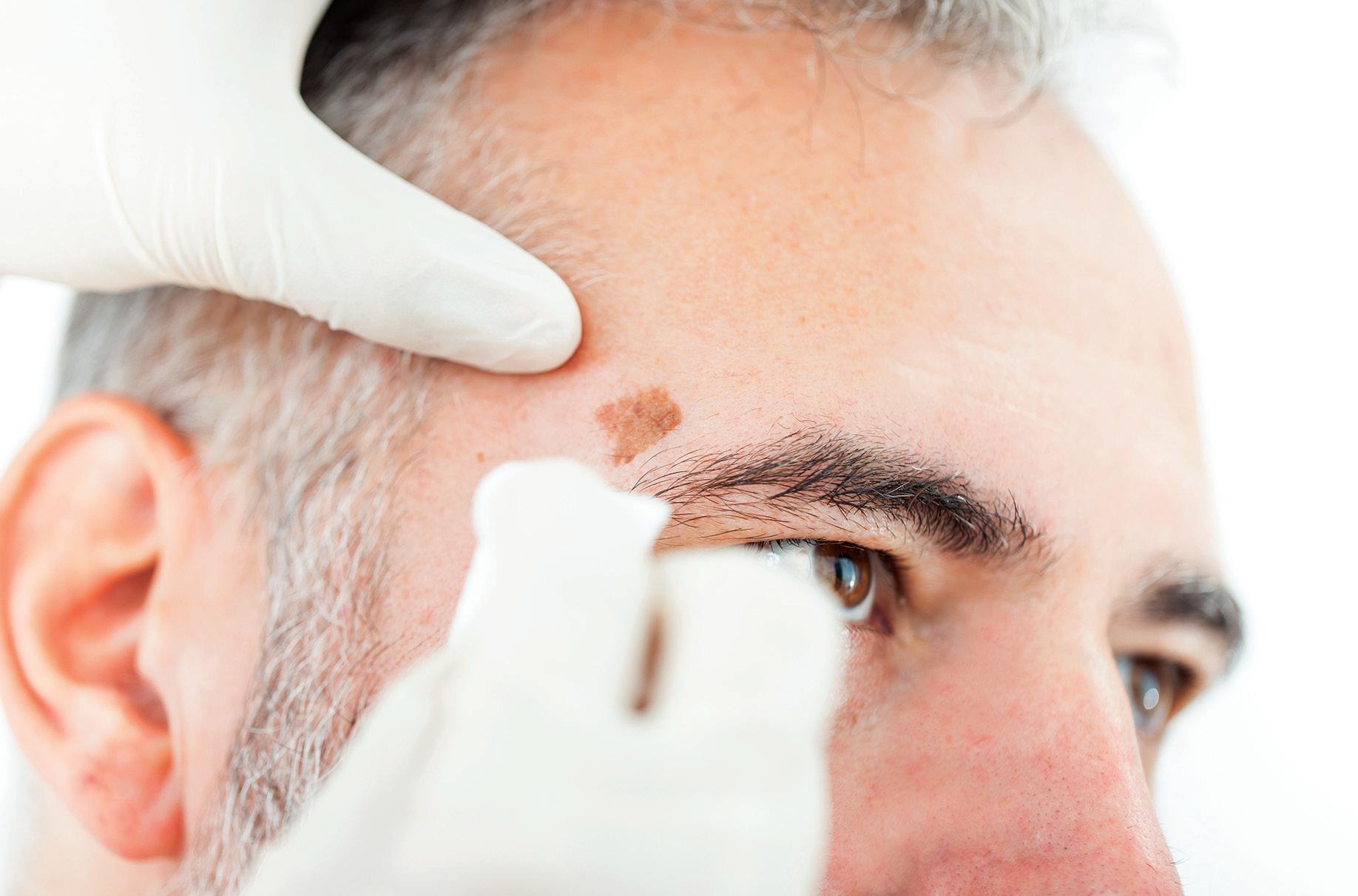
4 minute read
Ask for support
Groundbreaking Treatment for Skin Cancer Everyone Should Know About
While skin cancer is the most common cancer in the U.S., effective treatments combined with early detection make it very treatable. Now, a new non-invasive treatment offers benefits to skin cancer patients never possible before, while matching the very high permanent cure rates of conventional methods. Read on as Ashwatha Narayana, Chairman of Radiation Oncology at Northern Westchester Hospital (NWH), discusses cutting-edge High Dose Rate Brachytherapy, now available at NWH.
Traditionally, skin cancers have been treated either with Moh’s surgery, in which the cancerous tissue is removed, or by conventional radiation. Both methods offer superb success rates of 96 to 99 percent. However, now a third option – High Dose Rate Brachytherapy (HDRBT) – offers a unique cosmetic advantage that’s particularly valuable as skin cancers mainly develop on the parts of our bodies most exposed to sun – the face, head and neck.
To appreciate this advantage, let’s first look at Moh’s surgery. In this procedure, “the cancer is cut out, leaving behind a hole which the surgeon fills with skin from somewhere else on your body,” explains Dr. Narayana. “This forms a scar.” If the procedure is on your face or neck, the scar can be quite noticeable.
Now let’s look at conventional radiation for skin cancer. In this therapy, not only is the tumor radiated, but so are its “margins,” or edges. “Included is normal tissue that may have microscopic cancerous cells that have crept into that area.” As a result, a wide area is radiated – sometimes causing the skin to thin or break, to get a bit darker or lighter, to develop red streaks, or to appear scarred or wrinkled. If this happens on your face, it is often highly visible.
By contrast, HDRBT involves radiating much smaller margins around the tumor. “Its rays are intense, more concentrated. So it’s as effective at the edges of the tumor as it is at the center. Whereas conventional radiation diffuses – gets weaker toward the edges – so its radiation field must be extended. If we’re treating a tumor near the eye with conventional radiation, its wider field of radiation creates the risk of blindness, or of damaging the lens, or of the breakdown of surrounding tissue. But with concentrated HDRBT, these risks significantly diminish.”
Here, patients experience the warmth of a community hospital, yet receive a level of cancer care that’s first-rate.”
Adds the doctor: “The beauty of HDRBT is that we’re not damaging healthy tissue. Not only is that safer for the skin and all the underlying tissue it encloses and protects, but there is minimal to no scarring. The cosmetic benefit is especially valuable if you have skin cancer near the lips, nose or eyes.”
And the new treatment offers patients a second unique benefit: It’s fast. “Patients who have this procedure avoid spending six
to eight hours at their dermatologist’s office having Moh’s surgery. Nor do they need to spend six weeks traveling to and from conventional radiation treatments. Instead, after just two weeks of fifteen-minute treatments with High Dose Rate Brachytherapy, treatment is complete.
Dr. Narayana also recommends the new radiation therapy for elderly patients who might not tolerate surgery. “In Westchester County, we have a high population of older community members with skin cancer. Last week, I treated a 93-yearold woman with a large basal cell carcinoma on her eyelid. Because of her age, anesthesia and post-surgical healing may have been challenging. Using HDRBT, I was able to remove the tumor, and she’s having a very smooth recovery.”
There are times, however, that Dr. Narayana may recommend Moh’s surgery or conventional radiation therapy for a skin cancer: “If you have a large lesion on a leg, let’s say, and there’s no issue regarding scarring. Or if a tumor has come back a second time. That’s why it’s important to talk to your doctor about all your treatment options.”
Currently, Northern Westchester Hospital is the only community hospital in Westchester offering HDRBT for skin cancer. “There’s this myth that community hospitals can’t provide the most advanced cancer care. But that’s simply not the case.”
To learn more about Dr. Narayana visit nwhcancercenter.org/DrNarayana
An Option for Many Patients
Dr. Narayana’s 83-year-old patient had a cancerous lesion on the edge of his ear. It was getting bigger and had begun to ache. He also had a cardiac problem and was on a blood thinner. Dr. Narayana discussed options with his patient. Moh’s surgery would involve a sixhour procedure during which the doctor would use tissue from the man’s thigh to fill the hole left by surgery. Dr. Narayana was frank with his patient: The cosmetic result would “not be perfect.” Meanwhile, conventional radiation would require radiating a large part of the ear. And there were transportation issues that made radiation sessions Monday through Friday for six weeks very difficult. “For him,” says Dr. Narayana, “advanced High Dose Rate Brachytherapy was a great option. After six brief sessions, the lesion was gone, with no bleeding.” Scarring was non-existent. “If you saw him one month after the procedure, it was as if he’d never had it!”





